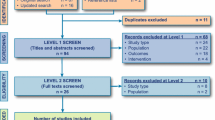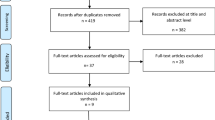Abstract
Background: Major orthopaedic surgery, such as total hip replacement (THR) and total knee replacement (TKR), is associated with an increased risk of venous thromboembolism (VTE).
Objective: Clinical trials have demonstrated the efficacy of rivaroxaban, a oncedaily, orally administered Factor Xa inhibitor, for the prevention of VTE in patients undergoing THR or TKR. This analysis evaluated the cost effectiveness of rivaroxaban compared with enoxaparin, from a US payer’s perspective.
Methods: A decision-analytic model was developed to compare the costs and outcomes associated with rivaroxaban and enoxaparin for the prevention of VTE. The model replicated short-term clinical outcomes from the phase III RECORD trials.
RECORD1 and RECORD2 compared rivaroxaban 10mg daily (qd), given for 35 days, with enoxaparin 40mg qd, given for 35 days or 10 to 14 days, respectively, in patients undergoing THR. RECORD3 compared 10 mg of rivaroxaban qd for 10 to 14 days versus 40 mg of enoxaparin qd for 10 to 14 days in patients undergoing TKR. The decision-analytic model also included data on long-term complications and sequelae as captured in observational studies and databases. It also included direct year 2010 medical costs over 1-year and 5-year time horizons. A series of sensitivity analyses were performed to determine the impact of different factors on the results of the model. Results of the cost-effectiveness analysis were reported in terms of symptomatic VTE events avoided.
Results: Rivaroxaban was associated with cost savings of $US511.93 per patient and prevented an average of 0.0145 symptomatic VTE events per patient in the THR population, compared with enoxaparin. For a TKR population, 10 to 14 days of rivaroxaban prophylaxis was associated with cost savings of $US465.74 and prevented an average 0.0193 symptomatic VTE events per patient. Sensitivity analysis suggested that the results of the model were robust, with cost savings ranging from $US133.96–629.57 in the THR population and $US293.01–848.68 in the TKR population, depending on the variables used. Sensitivity analysis also suggested that the economic profile of rivaroxaban is improved when the time horizon of the model is extended from 1 year to 5 years. A probabilistic sensitivity analysis confirmed the findings of baseline results, showing that rivaroxaban was less costly and more effective in all model simulations for both populations.
Conclusions: This decision-analytic model analysis, from the US payer’s perspective, concluded that rivaroxaban may be cost saving in both the THR and the TKR populations, when compared with enoxaparin in the US.










Similar content being viewed by others
References
Geerts WH, Bergqvist D, Pineo GF, et al. Prevention of venous thromboembolism: American College of Chest Physicians Evidence-Based Clinical Practice Guidelines (8th edition). Chest 2008; 133 (6 Suppl.): 381–453S
Sullivan SD, Kahn SR, Davidson BL, et al. Measuring the outcomes and pharmacoeconomic consequences of venous thromboembolism prophylaxis in major orthopaedic surgery. Pharmacoeconomics 2003; n21 (7): 477–96
Agency for Healthcare Research and Quality. Healthcare Cost and Utilization Project (HCUP). Rockville (MD): U.S. Department of Health and Human Services, 2009 [online]. Available from URL: http://www.ahrq.gov/data/hcup [Accessed 2011 Jul 27]
Rivaroxaban (Xarelto) full prescribing information. Titusville (NJ): Janssen Pharmaceuticals, Inc., 2011
Graff J, Von Hentig N, Misselwitz F, et al. Effects of the oral, direct factor Xa inhibitor rivaroxaban on platelet-induced thrombin generation and prothrombinase activity. J Clin Pharmacol 2007; 47 (11): 1398–407
Eriksson BI, Borris LC, Friedman RJ, et al. Rivaroxaban versus enoxaparin for thromboprophylaxis after hip arthroplasty. N Engl J Med 2008; 358 (26): 2765–75
Kakkar AK, Brenner B, Dahl OE, et al. Extended duration rivaroxaban versus short-term enoxaparin for the prevention of venous thromboembolism after total hip arthroplasty: a double-blind, randomised controlled trial. Lancet 2008; 372 (9632): 31–9
Lassen MR, Ageno W, Borris LC, et al. Rivaroxaban versus enoxaparin for thromboprophylaxis after total knee arthroplasty. N Engl J Med 2008; 358 (26): 2776–86
Turpie AG, Lassen MR, Davidson BL, et al. Rivaroxaban versus enoxaparin for thromboprophylaxis after total knee arthroplasty (RECORD4): a randomised trial. Lancet 2009; 373 (9676): 1673–80
Friedman RJ, Gallus AS, Cushner FD, et al. Physician compliance with guidelines for deep-vein thrombosis prevention in total hip and knee arthroplasty. Curr Med Res Opin 2008; 24 (1): 87–97
Wells PS, Borah BJ, Sengupta N, et al. Analysis of venous thromboprophylaxis duration and outcomes in orthopedic patients. Am J Manag Care 2010; 16 (11): 857–63
Turpie AG, Lassen MR, Eriksson BI, et al. Rivaroxaban for the prevention of venous thromboembolism after hip or knee arthroplasty: pooled analysis of four studies. Thromb Haemost 2011; 105 (3): 444–53
Prandoni P, Villalta S, Bagatella P, et al. The clinical course of deep-vein thrombosis. Prospective long-term follow-up of 528 symptomatic patients. Haematologica 1997; 82 (4): 423–8
Centers for Medicare and Medicaid Services. FY 2009 IPPS final rule [online]. Available from URL: http://www.cms.gov/acuteinpatientpps/ipps2009 [Accessed 2011 Jul 27]
Centers for Medicare and Medicaid Services. Clinical lab fee schedule, health and human services [online]. Available from URL: http://www.cms.gov/ClinicalLabFeeSched/02_clinlab.asp [Accessed 2011 Jul 27]
Quinlan DJ, Eikelboom JW, Dahl OE, et al. Association between asymptomatic deep vein thrombosis detected by venography and symptomatic venous thromboembolism in patients undergoing elective hip or knee surgery. J Thromb Haemost 2007; 5 (7): 1438–43
White RH, Romano PS, Zhou H, et al. Incidence and time course of thromboembolic outcomes following total hip or knee arthroplasty. Arch Intern Med 1998; 158 (14): 1525–31
Arias E. United States life tables, 2006 [online]. Available from URL: http://www.cdc.gov/nchs/data/nvsr/nvsr58/nvsr58_21.pdf [Accessed 2011 Jul 27]
Diamantopoulos A, LeReun C, Rasul F, et al. Indirect comparison of rivaroxaban vs standard prophylaxis for the prevention of venous thromboembolism in patients undergoing total hip or total knee replacement. 13th Annual International Meeting, International Society for Pharmacoeconomics and Outcomes Research; 2008 May 3-7; Toronto (ON)
Diamantopoulos A, LeReun C, Rasul F, et al. Indirect comparisons of rivaroxaban versus alternative prophylaxes for the prevention of VTE in patients undergoing total knee replacement. American Society of Hematology, 50th Annual Meeting and Exposition; 2008 Dec 6-9; San Francisco (CA)
Bucher HC, Guyatt GH, Griffith LE, et al. The results of direct and indirect treatment comparisons in meta-analysis of randomized controlled trials. J Clin Epidemiol 1997; 50: 683–91
Thompson SG, Sharp SJ. Explaining heterogeneity in metaanalysis: a comparison of methods. Stat Med 1999; 18: 2693–708
Pengo V, Lensing AW, Prins MH, et al. Incidence of chronic thromboembolic pulmonary hypertension after pulmonary embolism. N Engl J Med 2004; 350 (22): 2257–64
Büller HR, Davidson BL, Decousus H, et al. Subcutaneous fondaparinux versus intravenous unfractionated heparin in the initial treatment of pulmonary embolism. N Engl J Med 2003; 349 (18): 1695–702
Bureau of Labor Statistics. Consumer price index–all urban consumers [online]. Available from URL: http://data.bls.gov/cgi-bin/surveymost?cu [Accessed 2011 Jul 27]
AnalySource. AnalySource online: the online resource for drug pricing and deal information [online]. Available from URL: http://www.analysource.com [Accessed 2011 Jun 27]
Thomson Healthcare. Red book: pharmacy’s fundamental reference. Montvale (NJ): Thomson Healthcare, 2008
Ingenix. DRG Expert: a comprehensive guidebook to the DRG classification system. Salt Lake City (UT): Igenix, 2008
McGarry LJ, Thompson D, Weinstein MC, et al. Cost effectiveness of thromboprophylaxis with a low-molecular weight heparin versus unfractionated heparin in acutely ill medical inpatients. Am J Managed Care 2004; 10 (9): 632–42
Spyropoulos AC, Lin J. Direct medical costs of venous thromboembolism and subsequent hospital readmission rates: an administrative claims analysis from 30 managed care organizations. J Managed Care Pharm 2007; 13 (6): 475–86
Gould MK, Dembitzer AD, Sanders GD, et al. Low molecular weight heparins compared with unfractionated heparin for treatment of acute deep vein thrombosis. Ann Intern Med 1999; 130 (10): 789–99
MacDougall DA, Feliu AL, Boccuzzi SJ, et al. Economic burden of deep-vein thrombosis, pulmonary embolism, and post-thrombotic syndrome. Am J Health Syst Pharm 2006; 63 (20 Suppl.): S5–15
Goldhaber SZ, Tapson VF. A prospective registry of 5,451 patients with ultrasound-confirmed deep vein thrombosis. Am J Cardiol 2004; 93 (2): 259–62
Darkow T, Vanderplas A, Lew K, et al. Treatment patterns and real-world effectiveness of warfarin in non-valvular atrial fibrillation within a managed care system. Curr Med Res Opin 2005; 21 (10): 1583–94
sanofi-aventis. Lovenox® (enoxaparin sodium injection) for subcutaneous and intravenous use: prescribing information [online]. Available from URL: http://products.sanofi.us/lovenox/lovenox.html [Accessed 2011 Jun 27]
Rasanen P, Paavolainen P, Sintonen H, et al. Effectiveness of hip or knee replacement surgery in terms of qualityadjusted life years and costs. Acta Orthop 2007; 78: 108–15
Lenert LA, Soetikno RM. Automated computer interviews to elicit utilities: potential applications in the treatment of deep venous thrombosis. J Am Med Inform Assoc 1997; 4: 49–56
Haentjens P, De Groote K, Annemans L. Prolonged enoxaparin therapy to prevent venous thromboembolism after primary hip or knee replacement: a cost-utility analysis. Arch Orthop Trauma Surg 2004; 124: 507–17
Diamantopoulos A, Lees M, Wells PS, et al. Cost-effectiveness of rivaroxaban versus enoxaparin for the prevention of postsurgical venous thromboembolism in Canada. Thromb Haemost 2010; 104 (4): 760–70
Briggs A, Claxton K, Sculpher M. Decision modelling for health economic evaluation. Oxford: Oxford University Press, 2006
Oster G, Tuden RL, Colditz GA. A cost-effectiveness analysis of prophylaxis against deep-vein thrombosis in major orthopaedic surgery. JAMA 1987; 257 (2): 203–8
Lundkvist J, Bergqvist D, Jonsson B. Cost-effectiveness of extended prophylaxis with fondaparinux compared with low molecular weight heparin against venous thromboembolism in patients undergoing hip fracture surgery. Eur J Health Econ 2007; 8 (4): 313–23
Sullivan SD, Kwong L, Nutescu E. Cost-effectiveness of fondaparinux compared with enoxaparin as prophylaxis against venous thromboembolism in patients undergoing hip fracture surgery. Value Health 2006; 9 (2): 68–76
Eriksson BI, Kakkar AK, Turpie AG, et al. Oral rivaroxaban for the prevention of symptomatic venous thromboembolism after elective hip and knee replacement. J Bone Joint Surg Br 2009; 91 (5): 636–44
Patel MR, Mahaffey KW, Garg J, et al. Rivaroxaban versus warfarin in nonvalvular atrial fibrillation. N Engl J Med 2011; 365 (10): 883–91
EINSTEIN Investigators, Bauersachs R, Berkowitz SD, et al. Oral rivaroxaban for symptomatic venous thromboembolism. N Engl J Med 2010; 363 (26): 2499–510
McCullagh L, Tilson L, Walsh C, et al. A cost-effectiveness model comparing rivaroxaban and dabigatran etexilate with enoxaparin sodium as thromboprophylaxis after total hip and total knee replacement in the Irish healthcare setting. Pharmacoeconomics 2009; 27 (10): 829–46
Acknowledgements
The authors would like to acknowledge Michael A. Craig, MSc, who provided medical writing services with funding from Janssen Scientific Affairs, LLC.
This study was supported by Bayer HealthCare Pharmaceuticals and Janssen Pharmaceutical Research & Development, LLC.
Dr Nishan Sengupta is an employee of Janssen Global Services. Ms Aurea Duran is an employee of IMS Health, which has received consulting fees from Johnson & Johnson. At the time of this analysis, Ms Fiona Forster was employed by IMS Health and provided consultant services to Bayer HealthCare. Dr Louis Kwong has received research grants from Astellas, Bayer, Pfizer, sanofi aventis and GSK. He is on the speakers bureau for GSK and is a consultant for and has received royalties from Zimmer Inc. Mr Michael Lees is an employee of Bayer HealthCare and was employed in the Global Health Economic group at Bayer HealthCare during the period of this study. Mr Alexander Diamantopoulos been employed by companies that provided consultancy services to the manufacturer of rivaroxaban.
Ms Duran and Dr Sengupta led the study design, interpretation of results and writing. Ms Forster, Mr Lees and Dr Kwong contributed to the study design, interpretation of results and writing of the manuscript. Mr Diamantopoulos developed the initial cost-effectiveness model structure along with Dr Sengupta and Mr Lees and contributed to the interpretation of results and writing. Dr Kwong provided clinical input from a US perspective throughout the model development.
Author information
Authors and Affiliations
Rights and permissions
About this article
Cite this article
Duran, A., Sengupta, N., Diamantopoulos, A. et al. Cost Effectiveness of Rivaroxaban versus Enoxaparin for Prevention of Post-Surgical Venous Thromboembolism from a US Payer’s Perspective. PharmacoEconomics 30, 87–101 (2012). https://doi.org/10.2165/11599370-000000000-00000
Published:
Issue Date:
DOI: https://doi.org/10.2165/11599370-000000000-00000




